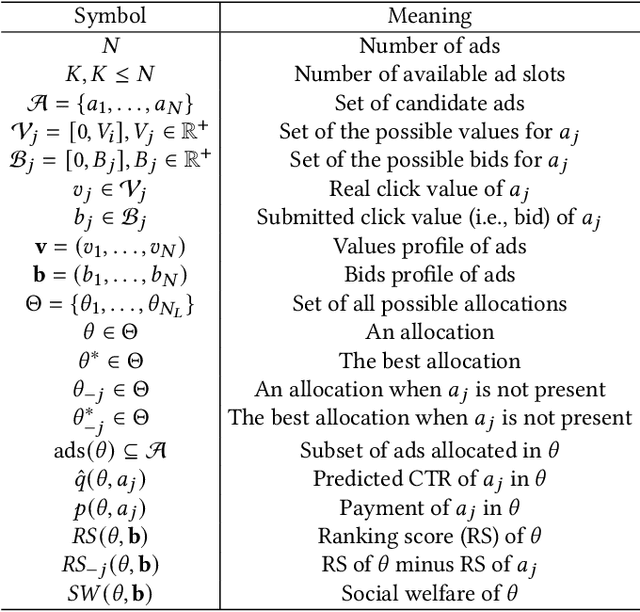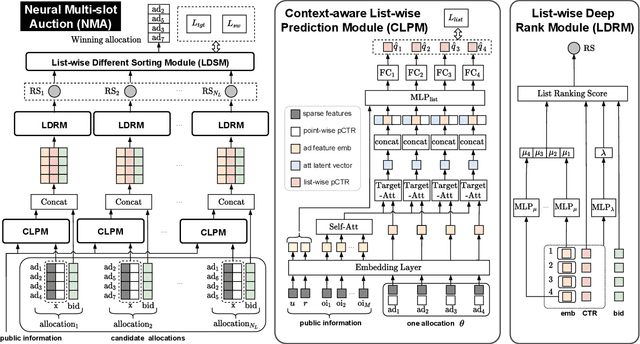Muzhi Guan
PIER: Permutation-Level Interest-Based End-to-End Re-ranking Framework in E-commerce
Feb 06, 2023



Abstract:Re-ranking draws increased attention on both academics and industries, which rearranges the ranking list by modeling the mutual influence among items to better meet users' demands. Many existing re-ranking methods directly take the initial ranking list as input, and generate the optimal permutation through a well-designed context-wise model, which brings the evaluation-before-reranking problem. Meanwhile, evaluating all candidate permutations brings unacceptable computational costs in practice. Thus, to better balance efficiency and effectiveness, online systems usually use a two-stage architecture which uses some heuristic methods such as beam-search to generate a suitable amount of candidate permutations firstly, which are then fed into the evaluation model to get the optimal permutation. However, existing methods in both stages can be improved through the following aspects. As for generation stage, heuristic methods only use point-wise prediction scores and lack an effective judgment. As for evaluation stage, most existing context-wise evaluation models only consider the item context and lack more fine-grained feature context modeling. This paper presents a novel end-to-end re-ranking framework named PIER to tackle the above challenges which still follows the two-stage architecture and contains two mainly modules named FPSM and OCPM. We apply SimHash in FPSM to select top-K candidates from the full permutation based on user's permutation-level interest in an efficient way. Then we design a novel omnidirectional attention mechanism in OCPM to capture the context information in the permutation. Finally, we jointly train these two modules end-to-end by introducing a comparative learning loss. Offline experiment results demonstrate that PIER outperforms baseline models on both public and industrial datasets, and we have successfully deployed PIER on Meituan food delivery platform.
NMA: Neural Multi-slot Auctions with Externalities for Online Advertising
May 20, 2022



Abstract:Online advertising driven by auctions brings billions of dollars in revenue for social networking services and e-commerce platforms. GSP auction, which is simple and easy to understand for advertisers, has almost become the benchmark for ad auction mechanisms in the industry. However, the allocation stability of GSP depends on the separable CTR assumption, which means that GSP considers neither position-dependent externalities nor ad-dependent externalities in multi-slot scenario, leading to suboptimal performance. Some GSP-based deep auctions (e.g., DeepGSP, DNA) have attempted to upgrade GSP with deep neural networks, while only modeling local externalities and thus still suboptimal. On the other hand, although VCG-based multi-slot auctions (e.g., VCG, WVCG) take externalities into consideration, they lack an efficient balance of both revenue and social welfare. In this paper, we propose a novel auction named Neural Multi-slot Auction (NMA) to tackle the above-mentioned challenges. Specifically, we model the global externalities effectively with a context-aware list-wise prediction module to achieve better performance. We design a list-wise deep rank module to guarantee incentive compatibility in end-to-end learning. Furthermore, we propose an auxiliary loss for social welfare to effectively reduce the decline of social welfare while maximizing revenue. Experiment results on both offline large-scale datasets and online A/B tests demonstrate that NMA obtains higher revenue with balanced social welfare than other existing auction mechanisms (i.e., GSP, DNA, WVCG) in industrial practice, and we have successfully deployed NMA on Meituan food delivery platform.
 Add to Chrome
Add to Chrome Add to Firefox
Add to Firefox Add to Edge
Add to Edge